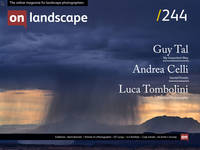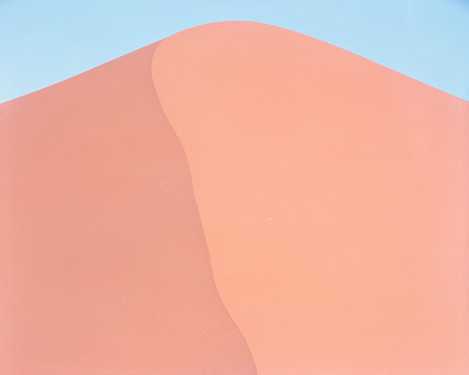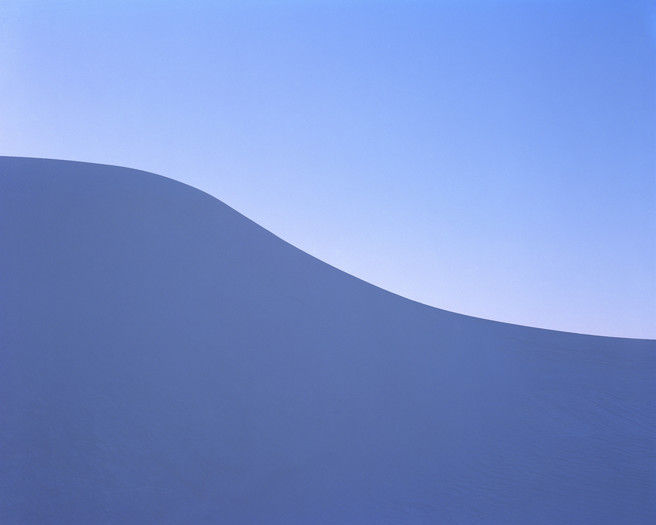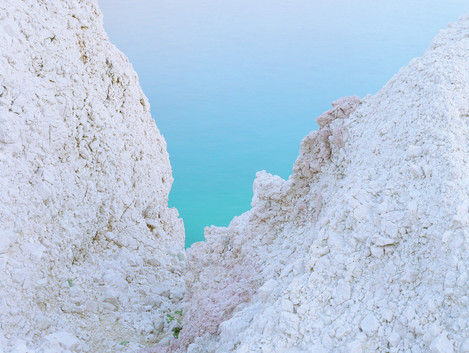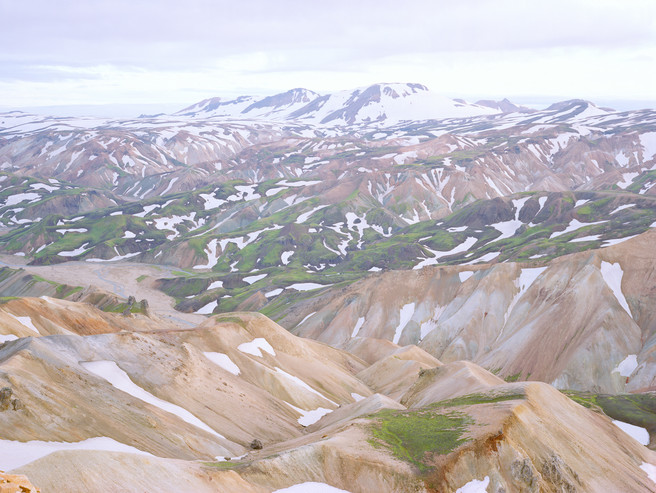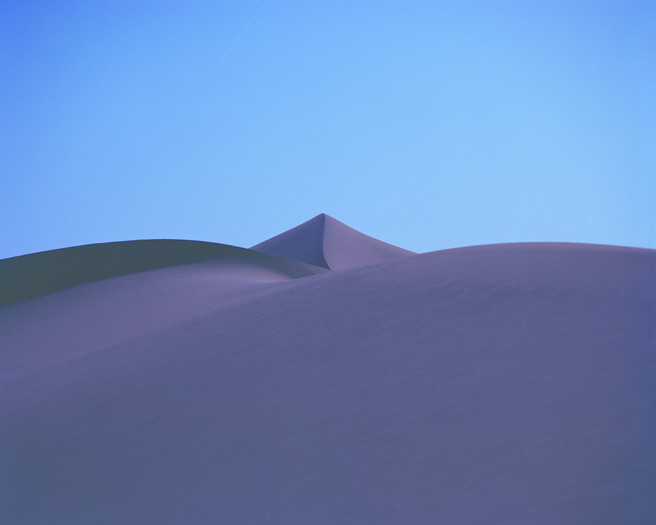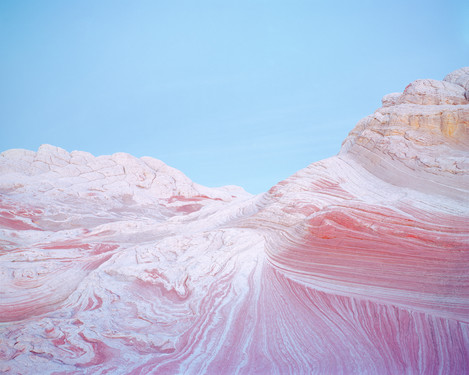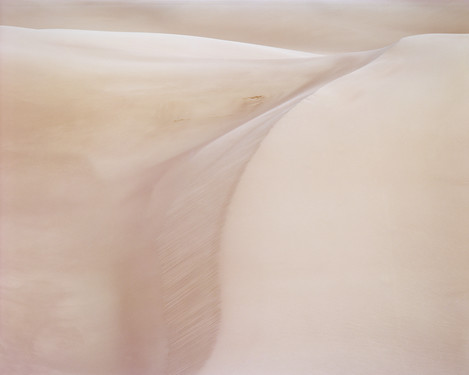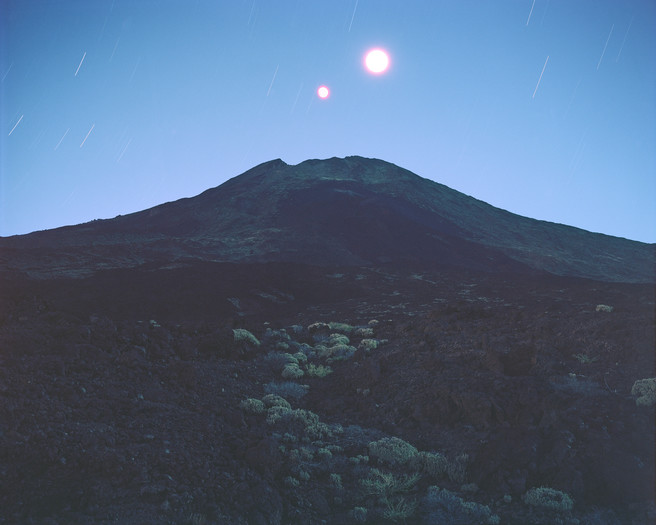Featured Photographer

Luca Tombolini
Luca was born in 1979 in Milan. He completed humanistic studies and after that a degree in Sciences of Communication, with a major on rhetoric patterns in Cinema. While studying at university he met with large format photography and started experimenting. He’s self-taught about large format photography.
Luca started photographing desert landscapes during long solo adventures following an unconscious desire that he later theorised as a need for a glimpse of a transcendent absolute. Of which nowadays society is more and more becoming oblivious. He’s a reader of C.G.Jung.

Michéla Griffith
In 2012 I paused by my local river and everything changed. I’ve moved away from what many expect photographs to be: my images deconstruct the literal and reimagine the subjective, reflecting the curiosity that water has inspired in my practice. Water has been my conduit: it has sharpened my vision, given me permission to experiment and continues to introduce me to new ways of seeing.
We live in an image hungry age; for all the benefits, some things have been lost. I keep being struck by the parallels, and differences, in painting. I increasingly hear talk of process, rather than outcome, and how that enriches the experience for the artist, and ultimately, the viewer. Instead of focusing on generating finished works, art is an exercise in learning, and in solving problems - a voyage of discovery, of enlightenment potentially, and a way of escaping the physical world.
These words resonate as I hear Luca talk of how he works. The way that large format and film promulgates ‘the need of a thought’. The experience of making the image, of getting to the place, of discarding the chaff of modern life from our minds.
His images are rather beautiful and somewhat different to what I’d previously associated with large format. Certain forms recur: the peak, the mound, the curve. The horizon, interrupted. Photographing land as water; shapes are fluid and ripple. A frequently minimal aesthetic and pastel tones allow plenty of room for the viewer, and I’m reminded of something I wrote a while back: “What we see is a reflection of who we are.”
Would you like to start by telling readers a little about yourself – where you grew up, your education and early interests, and what that led you to do?
Well, I was born in Milan, Italy, and grew up in the city. I wasn’t taking many pictures in those early years until, while I was researching for my final assignment at university, I discovered large format cameras and something clicked. The beauty of the tool and the magic around the moment when you can finally release the shutter made me start considering photography as a possible future.
When you became interested in photography what kind of images did you want to make? You started with smaller formats but I know that you didn’t take to these?
The first images I took when I finally had my own large format were urban landscapes at night, a sort of “Uncommon places” with what I had available in the outskirts of Milan. Especially in misty or snowy conditions, and to make it even more strange I was cross-processing the films. They weren’t bad considering my early stage of visual education.
Who (photographers, artists or individuals) or what has most inspired you, or driven you forward in your own development as a photographer?
Those uncommon urban places I talked about above were inspired by a series of Nadav Kander, who in those same years was shooting highway bridges and suburbs at night. Later on, I found a great deal of philosophical inspiration in the work of Hiroshi Sugimoto, and aesthetics inspiration in Massimo Vitali.
Beyond the resolution and character of the film, what aspects of large format do you find most attractive/useful?
The need of a thought. You must think before you do, every shot is an exercise of visual concentration to rule out from the big number of possibles the one shot you’re going for; in terms of choice of the lens, the position of the tripod, the frame and the time. Not to talk about when I decided to experiment with multiple exposures as in “Vistas Paradossales”. If I could do the same with digital, rest assured I’d be shooting a bit here and a bit there and every 15 minutes or so. The result of having a single shot to capture that image is that afterwards, the editing is very simple.
The pastel character of colour negative film lends a subtle tone to the work. Do you keep with one film for all of your projects or do you pick and choose?
For the pastel tones more than sticking to a single film, I stick to my workflow which involves careful exposure and a drum scanner which I personally use. In terms of films, to be honest, I loved the Fuji ones but unfortunately, they closed production.
The images we see on your website are the result of a series of long, solitary, trips. You’ve said that it is only when you’re lost that you start to photograph?
Exactly. I try not to use the trendy concept of serendipity but it describes it well. The images are the visible part of the experience but what’s hidden in them is the adventure and the magic that I went into. When I first started I didn’t realise this, but as the series progressed I began to savour the fascination of being on solo trips in remote places, to the point that now that dimension is predominant and consequently the time spent on trips gets longer and longer. Likewise, I learned not to jump in trying to photograph everything interesting but to take the time to find the right place and maybe shoot a whole series in just a single environment.
To what extent do you think that the inversion of the image in the glass helps you to emphasise the surreal qualities of the landscapes? To take something literal, and make it increasingly abstract?
It works both ways for me. It’s true that for some abstract shots to see the image inverted is a plus and I’ve used it a lot, but many times the first glimpse of a possible image is just by looking at it and then trying to find it back on the ground glass.
We tend to interpret images as being about something we see – what, where, when. Rather than evoking the landscapes that you lose yourself in, to what extent are you evoking yourself: your experiences, your thoughts, your feelings? Is it (self) portrait photography in another form?
As a matter of fact when I get asked where was an image was taken, as comprehensible as it is since we’re talking about landscapes, I’ve got the feeling that it shouldn’t be the point of my kind of photography. I’m much more at ease when I get comments about the feelings they evoke or the dreamy state they create and that they had created on me as well. A sunrise in the dunes surrounded by shades of colours or a sunset in the Badlands is an out of this world experience and hence suggests states of consciousness that aren’t normally present in our daily life. That, I believe, is the core of the images I make.
On a lighter note, are you comfortable with the comparisons that have been made between your images and ice cream? (Perhaps we should say gelato?) Does it say something about our innate need to be able to associate what we see with something we know, rather than accept the new or the unknown?
I missed that about gelato but of course, people see what they see and there’s nothing wrong with that. I still remember a girl saying she felt like scooping a dune with a spoon, it made me laugh because soon after that picture was taken I had to run back to the truck as a sand storm was approaching and while fleeing I ended up breathing and eating sand. Another interpretation is, especially with dunes, people see nude bodies in them. Navels, thighs, bums, breasts. Coincidence? Or it’s my unconscious? Or it’s their unconscious? We’ll never know.
Would you like to choose 2-3 favourite photographs from your own portfolio and tell us a little about why they are special to you? If not favourite images, then the experience behind them?
LS VII #92
This isn’t a favourite generally speaking but the story behind is quite adventurous. It’s taken near Landmannalaugar in Iceland. For half a day of decent weather I had to stick around that place for ten days and when finally I had my chance I left early morning to trek around a 6 hour ring that became 12 hours because of photographing. After taking this image at sunset I was left with another 4 hours to walk back to the car which I could do in darkness thanks to the telephone’s compass. It was frightening at times but I still remember the adrenaline of it.
LS IX #17
This is one of my all-time favourites. It’s from my second trip to Morocco and I remember I wasn’t happy with the place I was shooting at the time. There were dunes but the vibe wasn’t right, too many tourists around. So I took my 4x4 and randomly started to travel south until I found this small area of dunes with no one else around. I spent the rest of the trip there photographing at sunrise and sunset. These are still the most striking dunes shapes I’ve ever seen.
Is it important to you that other people see your work in print, and how do you choose to print and present your pictures? Is the size of images important in further removing the viewer from common perceptions of reality?
The real thing is of course when an image is printed and put on a wall. I’m so happy to go to the lab and see the first time an image gets hung on the wall to be checked. Most of those of course are at their best printed big - 1.5 x 1.2 metres. They’re imposing and alive, and it’s only at that point when I finally have the real feeling of an image; I’ve looked at it a thousand times on a computer screen but when I finally see it printed the perception changes. They become hypnotic and meditative.
About presentation, I always prefer thin frames and I’ve chosen to print Lambda or Lightjet on matte archival paper.
How do you now view your earlier works? Do you see evolutions, subtle shifts in what draws your eye, and what you want to say?
The really early ones are far from anything I might like now, while let’s say those starting from 2014 are somehow comparable to the recent ones. But of course, I’m very much looking for evolutions in what I do to keep the flame of experimentation on. For instance the last series “Vistas Paradossales” - it’s a major step into evolving what I’ve been doing so far.
In your series ‘LS XI: Vistas Paradossales’ you’ve chosen to juxtapose multiple exposure shots on large format negative film with new landscapes derived from high resolution scans of intermingled solvents. Does this represent a potential new direction for you? Do you have any particular projects or themes that you would like to explore further?
The theme I was exploring in Vistas is our perception of Time and Space, as opposed to what Time and Space are and how they really function.
Working with a large format camera is a big commitment. Do you also use a digital camera in the field or can you foresee a greater role for digital in your future workflow?
I really don’t think so, unless Kodak decides to make it impossible to shoot 4x5in films. Apart from the aesthetics of the negative I also appreciate a lot the fact of having a tangible thing, the exposed negative, which is the image. On the contrary, with digital you just have a virtual copy that only exists on a computer.
What from your ‘residencies’ in quiet places, from the stripped back minimal aesthetic, do you bring back to your home and life in Italy?
A lot, to the point that my pleasure trips became much alike my photographic trips. I really found a way of living, and infinite possibilities in being, wondering around that. I’m seriously thinking that I could be happy in some years to become a full time traveller and not necessarily only for pictures.
You’ve said that you balance the time spent making images during your trips by time not touching a camera afterwards, so if you have to take a break from all things photographic for a week, what would you end up doing? What other hobbies or interests do you have?
Living and healthy sporty life in beautiful natural places. To recharge the batteries for me, nothing is better than a week or two living close to a wild beach with nice waves to surf. Or to explore a mountain range by trekking, or to find a nice untouched lake somewhere and settle down for some days, swimming and camping. Give me that and I’m happy.
And finally, is there someone whose photography you enjoy – perhaps someone that we may not have come across - and whose work you think we should feature in a future issue? They can be amateur or professional.
I recently had a crush for the images of @mustafahabdulaziz
Thank you Luca. Perhaps it’s time to dust off the film cameras!
You can see more of Luca’s images at www.lucatombolini.net. He’s also on Instagram.

